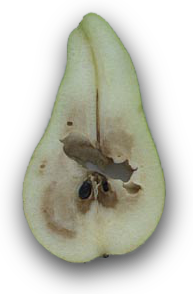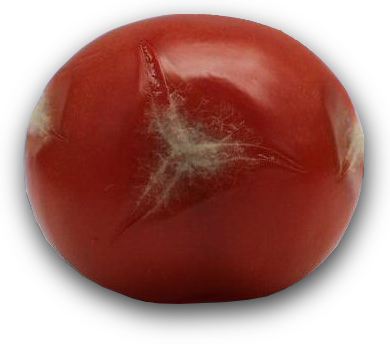Agriculture
 Post-harvest losses of crops are estimated to be between 25 and 40% worldwide, this demands for optimal storage facilities. Today, controlled atmosphere (CA) storage facilities, i.e. storage at lowered temperatures, low oxygen concentrations and elevated CO2 levels are quite common. Metabolic processes in CA-stored products, like fruits and vegetables, are slowed down and thus ripening and aging are delayed.
Post-harvest losses of crops are estimated to be between 25 and 40% worldwide, this demands for optimal storage facilities. Today, controlled atmosphere (CA) storage facilities, i.e. storage at lowered temperatures, low oxygen concentrations and elevated CO2 levels are quite common. Metabolic processes in CA-stored products, like fruits and vegetables, are slowed down and thus ripening and aging are delayed.
Ethylene (C2H4) is an important and sensitive marker for ripening of fruits that can be used to optimize CA conditions and prevent losses. The ETD-300 ethylene detector is currently in use for postharvest research in the Netherlands.
Production from micro-organisms
 In addition to plants, some micro-organisms, including fungi and bacteria, can synthesize ethylene themselves. In these conditions, there is of great importance to elucidate the role played by ethylene released by each part during the pathogen-host interaction. Botrytis cinerea is one example of important worldwide pathogens, which attacks more than 200 plant species and causes extensive losses to many field-grown and greenhouse crops. Monitoring ethylene released by pathogen in both in vitro and in vivo allows peering into the heart of the fungal-host communication and will lead to future applications in the post-harvest technologies.
In addition to plants, some micro-organisms, including fungi and bacteria, can synthesize ethylene themselves. In these conditions, there is of great importance to elucidate the role played by ethylene released by each part during the pathogen-host interaction. Botrytis cinerea is one example of important worldwide pathogens, which attacks more than 200 plant species and causes extensive losses to many field-grown and greenhouse crops. Monitoring ethylene released by pathogen in both in vitro and in vivo allows peering into the heart of the fungal-host communication and will lead to future applications in the post-harvest technologies.
Nitrous oxide (N2O) is another gas produced naturally from a wide variety of biological sources in soil and water, particularly microbial action in wet tropical forests.
Agriculture is the main source (up to 90%) of ammonia (NH3) emissions and agricultural soil management next to animal manure manure management represent the primary human-related source of nitrous oxide (N2O). Heavy utilization of synthetic nitrogen fertilizers in crop production typically results in significant N2O emissions from agricultural soils. Other sources for N2O are deforestation and biomass burning.
